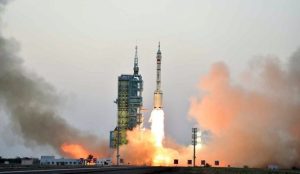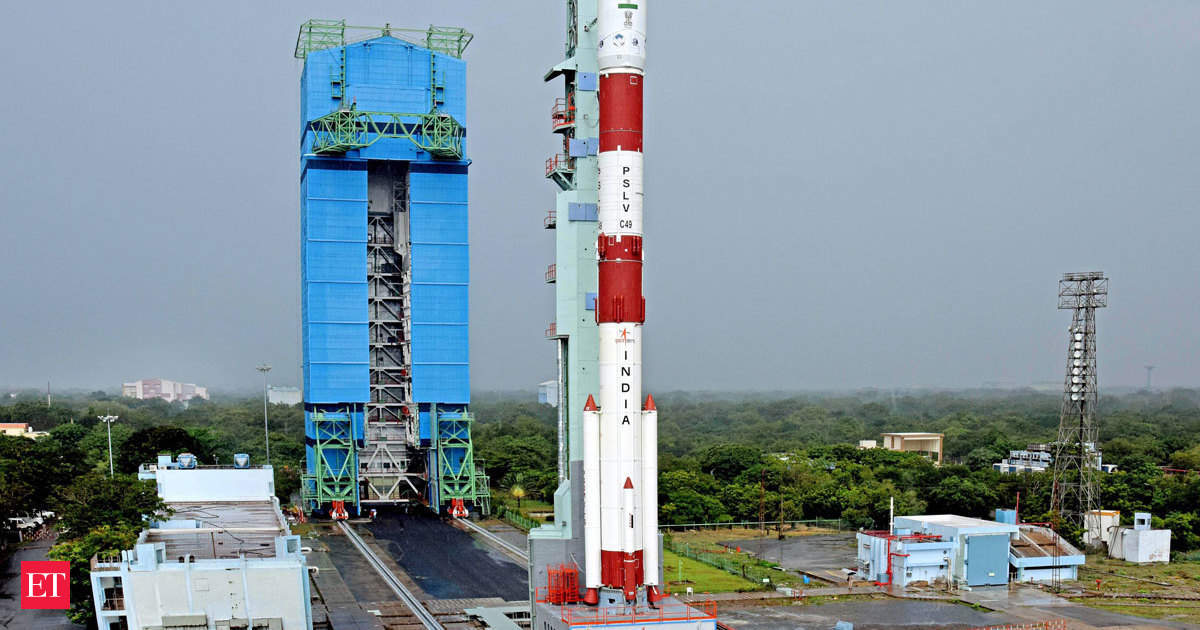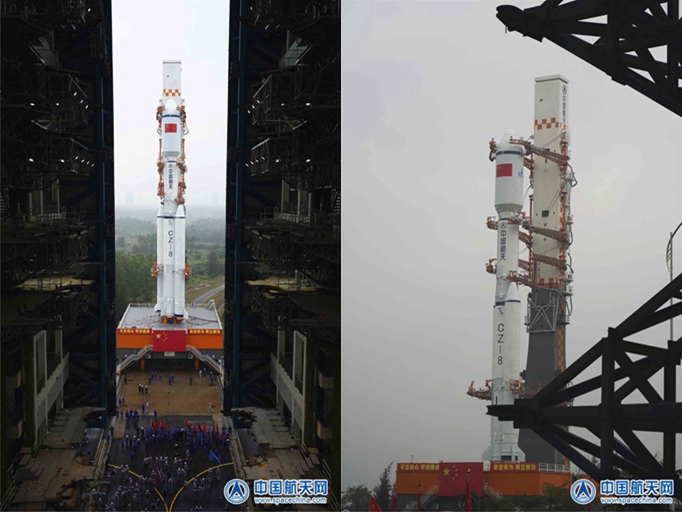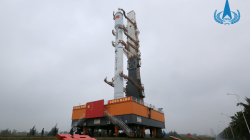Latest Thread
- UK Is there any British officer or British military personnel here that I can discuss with?
- Article Requirements for the Command and Control of the UK's Ground-Based Air Defence
- NATO Missile Defense Radar(Türkiye)
- Ukraine Construction of a defense line by the Ukrainian army
- MBDA to double the range of Aster 15 surface-to-air missiles with Aster 15 EC upgrade
You are using an out of date browser. It may not display this or other websites correctly.
You should upgrade or use an alternative browser.
You should upgrade or use an alternative browser.
China Space Program
- Thread starter Nilgiri
- Start date
China's booming space program may soon put the US and Russia to shame

China's booming space program may soon put the US and Russia to shame
 www.businessinsider.in
www.businessinsider.in
S
Sinan
Guest
I don't know Russia but with US having SpaceX there is no indication that China can surpass US.China's booming space program may soon put the US and Russia to shame

China's booming space program may soon put the US and Russia to shame
www.businessinsider.in
Not yet, US is still in the lead but China, as a latecomer , is catching up fast, China had 3 years in a row made more rocket launches than US and Russia.I don't know Russia but with US having SpaceX there is no indication that China can surpass US.
S
Sinan
Guest
Yet, you can't compete against reusable rockets of SpaceX with conventional rockets. It just not feasible.Not yet, US is still in the lead but China, as a latecomer , is catching up fast, China had 3 years in a row made more rocket launches than US and Russia.
Yet, you can't compete against reusable rockets of SpaceX with conventional rockets. It just not feasible.
I think China will get there, just give them some time.
But SpaceX is quite phenomenal in many ways, so let us see.
Either way science and progress wins in end by the competition across countries.
Yet, you can't compete against reusable rockets of SpaceX with conventional rockets. It just not feasible.
The launch and landing of China’s reusable spacecraft
Posted by Lia Rovira in SPACE | September 9, 2020
The launch and landing of China’s reusable spacecraft | EarthSky.org
Although few details are known, and no images have been released, the Chinese did apparently launch a reusable spacecraft on September 4, 2020. It appears to have deployed a satellite to orbit and then returned to Earth safely 2 days later.
China successfully launches two satellites for gravitational wave detection
SECTIONSChina successfully launches two satellites for gravitational wave detection
PTILast Updated: Dec 10, 2020, 10:28 AM IST
BEIJING: China on Thursday successfully launched two satellites for the detection of gravitational waves into planned orbit from the Xichang Satellite Launch Centre in Sichuan Province.
The two satellites, which compose the Gravitational Wave High-energy Electromagnetic Counterpart All-sky Monitor (GECAM) mission, were launched by a Long March-11 carrier rocket during the early hours, state-run Xinhua-news agency reported.
The GECAM satellites will be used to monitor high-energy celestial phenomena such as gravitational wave gamma-ray bursts, high-energy radiation of fast radio bursts, special gamma-ray bursts and magnetar bursts, and to study neutron stars, black holes and other compact objects and their merger processes, the report said.
In addition, they will also detect high-energy radiation phenomena in space, such as solar flares, Earth gamma flashes and Earth electron beams, providing observation data for scientists, it said. The GECAM project is carried out by the Chinese Academy of Sciences.

China successfully launches two satellites for gravitational wave detection
China on Thursday successfully launched two satellites for the detection of gravitational waves into planned orbit from the Xichang Satellite Launch Centre in Sichuan Province.
S
Sinan
Guest
If true, it would be a great achivement and China would stay in game.The launch and landing of China’s reusable spacecraft
Posted by Lia Rovira in SPACE | September 9, 2020

The launch and landing of China’s reusable spacecraft | EarthSky.org
Although few details are known, and no images have been released, the Chinese did apparently launch a reusable spacecraft on September 4, 2020. It appears to have deployed a satellite to orbit and then returned to Earth safely 2 days later.earthsky.org
China's Long March-8 Y1 rocket gets ready for maiden launch
21:08, 16-Dec-2020China's Long March-8 Y1 rocket was on Wednesday transported to the launching area of the Wenchang Spacecraft Launch Site in south China's Hainan Province, preparing for its maiden launch in late December, according to the China National Space Administration (CNSA).
After the transportation, the rocket will be filled with propellant and is expected to be launched from the site.
With two stages and two boosters, the Long March-8 rocket is a new type of rocket that uses module design and can be prepared in a short time, making it competitive for commercial launch, reported Xinhua.
The first stage of the Long March-8 rocket is similar to that of the Long March-7 rocket and the second stage rocket is similar to the third stage of the Long March-3A rocket.
It has a payload capacity of five tons to sun-synchronous orbit and 2.8 tons to geostationary transfer orbit, according to the CNSA.
The Long March-8 rocket is estimated to conduct 10 to 20 launches annually after it hits the market, the administration said.

A planned future launch vehicle variant of the Long March-8 will feature combined booster recovery of the first stage and the boosters as a single unit.
The first stage and boosters of the Long March-8 rocket series are expected to be retrieved through vertical landing, said Long Lehao, chief designer of carrier rockets at the China Academy of Launch Vehicle Technology.
It was part of China's endeavors to develop reusable space vehicles, Long told a space conference held in Harbin, capital of northeast China's Heilongjiang Province in 2018.
If successful, the new rocket would provide commercial launch services to customers around the globe, Long said.

China's Long March-8 Y1 rocket gets ready for maiden launch
China's Long March-8 Y1 rocket was on Wednesday transported to the launching area of Wenchang Spacecraft Launch Site in south China's Hainan Province, preparing for its maiden launch in late December.
China says to share lunar samples with other countries
December 17, 2020 - 10:31BEIJING (Reuters) - China will share data and samples from the moon obtained by its Chang'e 5 probe on the basis of international conventions though "unfortunate" U.S. restrictions on cooperation might prevent it getting any, the deputy head of its space agency said.
The probe landed in the northern region of Inner Mongolia in the early hours of Thursday, bringing back the first lunar rocks and soil retrieved by any country since the 1970s and making China the third country ever to obtain lunar samples.
The material collected during the Chang'e-5 mission, named after the mythical Chinese goddess of the moon, will further scientists' understanding of the moon's origins.
The mission also tested China's ability to remotely acquire samples from space, ahead of more complex missions in the solar system.
"In accordance with international cooperation conventions and multilateral and bilateral cooperation pacts, we will issue rules on managing the moon samples and data," said Wu Yanhua, deputy head of the China National Space Administration.
"We will share with the relevant countries and scientists overseas, and some of them may be given as national gifts in accordance with international practices."
When asked if China would share any samples with the United States, which limits its NASA space agency from directly cooperating with China, Wu said existing U.S. restrictions were "unfortunate".
"The Chinese government is willing to share lunar samples with like-minded institutions and scientists from various countries," Wu said.
"To be able to cooperate or not depends on U.S. policy," Wu said.
China was willing to cooperate with U.S. agencies and scientists on the basis of equal benefit and win-win cooperation, he said.
China has not disclosed the amount of samples that it had retrieved. The plan was to collect 2 kg (4.41 lb) of rocks and soil.
"We will announce this soon," Hu Hao, chief designer of the third phase of China's lunar exploration programme, told Reuters on the sidelines of the briefing.
"We have not taken them out (of the probe) yet."

China says to share lunar samples with other countries
BEIJING (Reuters) - China will share data and samples from the moon obtained by its Chang'e 5 probe on the basis of international conventions though "unfortunate" U.S. restrictions on cooperation might prevent it getting any, the deputy head of its space agency said. The probe landed in the...
 www.swissinfo.ch
www.swissinfo.ch
China's new carrier rocket Long March-8 makes maiden flight
WENCHANG, Hainan, Dec. 22 (Xinhua) -- China's new medium-lift carrier rocket Long March-8 made its maiden flight on Tuesday, sending five satellites into planned orbit, according to the China National Space Administration (CNSA).
The rocket blasted off from the Wenchang Spacecraft Launch Site on the coast of southern China's island province of Hainan at 12:37 p.m. (Beijing Time).
The Long March-8 rocket has a total length of 50.3 meters, with a takeoff mass of 356 tonnes. It can carry a payload of at least 4.5 tonnes to a sun-synchronous orbit at an altitude of 700 km.
The rocket fills the gap in China's launch capability to the sun-synchronous orbit from 3 tonnes to 4.5 tonnes, and is of great significance for accelerating the upgrading of launch vehicles, according to the CNSA.
Last edited by a moderator:
China's New Rocket Makes Its First Flight
Business | December 22, 2020, Tuesday // 10:20A new Chinese carrier rocket made its first flight on Tuesday under a long-term plan to develop reusable launch vehicles aimed at reducing mission costs and speed up launch schedules for commercial clients.
The medium-lift Long March 8 Y-1 blasted off at 12:37 p.m. (0437 GMT) from the southern Chinese island of Hainan carrying five satellites, state media reported.
China plans to develop reusable rockets under the Long March 8 series in the coming years, similar to the Falcon range already produced by U.S. private aerospace firm SpaceX.
State media did not say if the Long March 8 Y-1 itself was reusable, but future variants are expected to be capable of vertical takeoff and vertical landing (VTVL), allowing them to be used for more than one launch.
China will develop its first VTVL vehicle around 2025, an official at the China Aerospace Science and Technology Corp, the country’s main space contractor, told a local conference in November.
The Long March 9 Y-1 launch wrapped up a hectic year for China’s space programme.
Earlier this month, China brought back rocks and soil from the moon in the first lunar sample retrieval since 1976. In July, China launched its first independent mission to Mars.
Around 2022, China aims to complete a multi-module, inhabited space station.
By 2045, it hopes to establish a programme operating thousands of flights a year and carrying tens of thousands of tonnes of cargo and passengers./Reuters

China's New Rocket Makes Its First Flight - Novinite.com - Sofia News Agency
A new Chinese carrier rocket made its first flight on Tuesday under a long-term plan to develop reusable launch vehicles aimed at reducing mission costs and speed up launch schedules for commercial clients. The medium-lift Long March 8 Y-1 blasted off at 12:37 p.
www.novinite.com
China conducts first launch of state-of-the-art CZ-8 vehicle with five satellites on board
The CZ-8 is a two-stage medium launch vehicle with low-temperature liquid propellant engines running on eco-friendly fuelRUSSIAN NEWS AGENCY
22 DEC, 15:00
BEIJING, December 22. /TASS/. China carried out the first successful launch of the newest launch vehicle CZ-8 ("Changzheng-8", English name Long March 8) on Tuesday with five satellites on board, reported China Central Television.
According to the news outlet, the launch took place from the Wenchang cosmodrome (southern Hainan province) at 12:37 local time (07:37 Moscow time). After 15 minutes, the rocket reached heliosynchronous orbit at an altitude of 512 km. Then five satellites separated from it: one experimental apparatus and four private probes.
This launch marks the 356th launch for the Changzheng series launch vehicles.
The CZ-8 is a two-stage medium launch vehicle with low-temperature liquid propellant engines running on eco-friendly fuel. Unlike other rockets in this series, the CZ-8 runs on liquid hydrogen and liquid oxygen — the result of their combustion is water, which makes this engine harmless to the environment. They are designed to launch spacecraft into geo- and heliosynchronous orbits.
Another feature of this rocket is that its design provides for the possibility of reusing the first stage engine and two upper stages — after takeoff, they must make a soft landing. This greatly reduces the cost of each launch, which makes the rocket especially attractive for commercial use.

China conducts first launch of state-of-the-art CZ-8 vehicle with five satellites on board
The CZ-8 is a two-stage medium launch vehicle with low-temperature liquid propellant engines running on eco-friendly fuel



